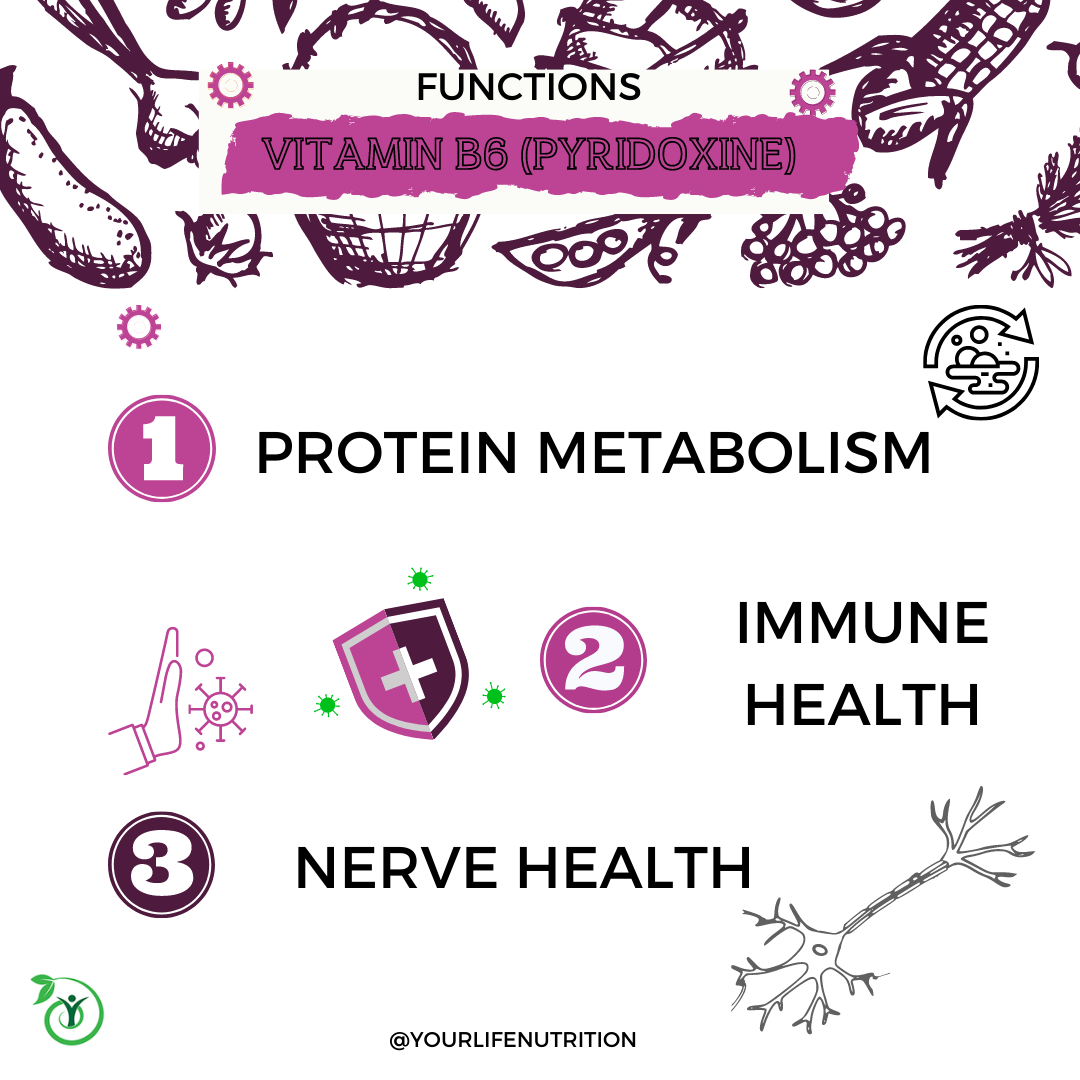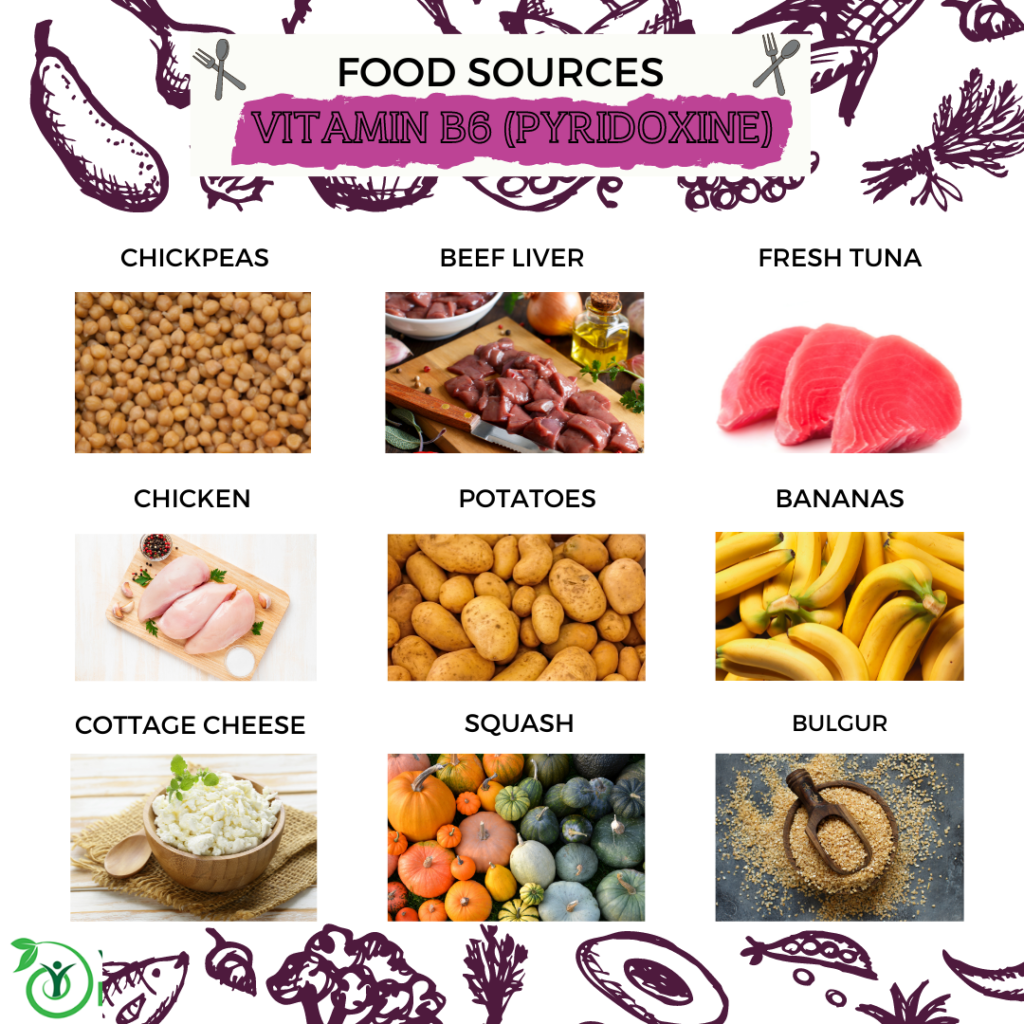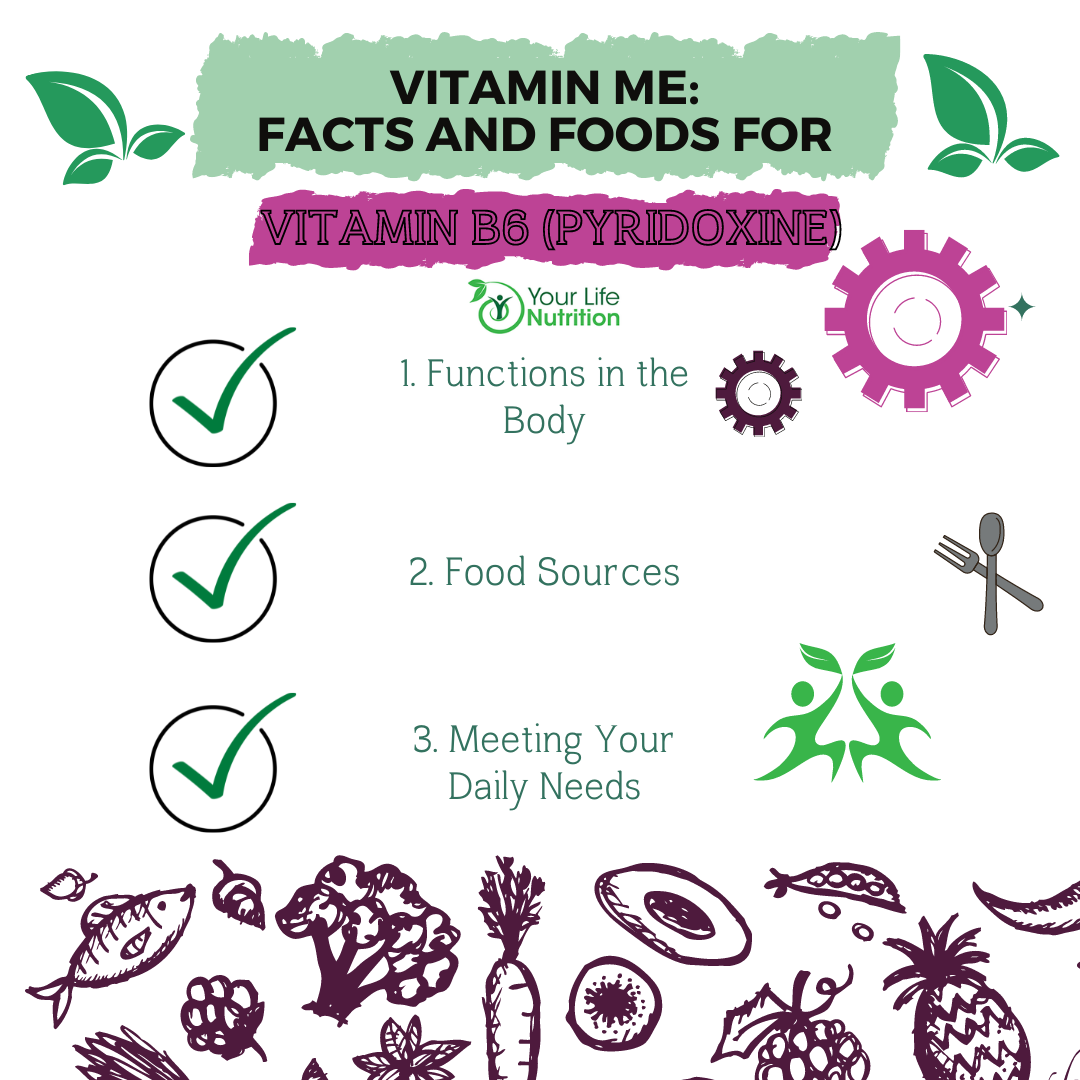Vitamin B6, or as some know it, pyridoxine, is another water-soluble vitamin that acts as an important coenzyme for over 100 different chemical reactions in the body.1,2 Before we talk about the specific functions B6 plays a part in, let’s talk about the importance of coenzymes in the body.

As we know, the body is constantly performing functions like digesting food, making blood cells, and making or breaking down different products.3 All of these functions occur through a series of chemical reactions.3 Imagine you need to get across the country

The same is true for chemical reactions in the body. If you took a car to travel across the country, it would take a lot longer than if you took a plane. But, unless you have your pilot license, you may need the help of a pilot when flying the plane. The same is true for the chemical reactions in the body. They cannot get to their “destination” or finish these chemical reactions on time, they need some assistance. So, who is this helper? Enzymes! You can think about enzymes as the fastest way of traveling. The enzymes are kind of like the pilot needed to fly the plane to get you to your destination on time. If you remember, a pilot also needs a co-pilot to help fly the plane. For our bodies, the co-pilot is a coenzyme, most often a vitamin.3
So, now that we understand what an enzyme and coenzyme is, let’s talk more about what reactions B6 specifically acts as a coenzyme for. This vitamin is crucial for the normal development of the brain, maintaining a healthy nervous and immune system, and working in protein metabolism.1,2 The recommended intake for vitamin B6 in men is 1.7 mg and 1.5 mg for women per day.2

Here are some great food sources of vitamin B6:
- Chickpeas = 1.1 mg per 1 cup
- Beef liver = 0.9 mg per 3 oz.
- Fresh Tuna = 0.9 mg per 3oz.
- Salmon = 0.6 mg per 3 oz.
- Chicken = 0.5 mg per 3 oz.
- Potatoes = 0.4 mg per 1 cup
- Banana = 0.4 mg per 1 fruit
- Cottage cheese = 0.2 per 1 cup
- Squash = 0.2 mg per ½ cup
- Bulgur = 0.2 mg per 1 cup

Vitamin B6 deficiency is uncommon, but it is still important to be aware of the signs and symptoms of B6 deficiency as this leads to microcytic anemia.3 It can take months or years to start developing symptoms like scaling of the lips/cracks at the corner of the mouth, swollen tongue, depression and confusion, irritability, and abnormally acute hearing.3 This is why it is so important to be aware of how much B6 you are consuming per day naturally from foods. Vitamin B6 likes to keep important functions in the body moving and staying “on schedule”, so next time you find yourself running late to an event, just remember B6 and other enzymes are hard at work keeping you “on time” everyday!
References:
- Vitamin B-6. Mayo Clinic. https://www.mayoclinic.org/drugs-supplements-vitamin-b6/art-20363468. Published February 3, 2021. Accessed February 2, 2022.
- Office of dietary supplements – vitamin B6. NIH Office of Dietary Supplements. https://ods.od.nih.gov/factsheets/VitaminB6-HealthProfessional/. Accessed February 2, 2022.
- Editors BBD, By: Editors BD. Coenzyme: Definition, function & examples. Biology Dictionary. https://biologydictionary.net/coenzyme/. Published October 5, 2019. Accessed February 2, 2022.
Post created by student dietetic intern from the University of Akron: Michaela Campbell





